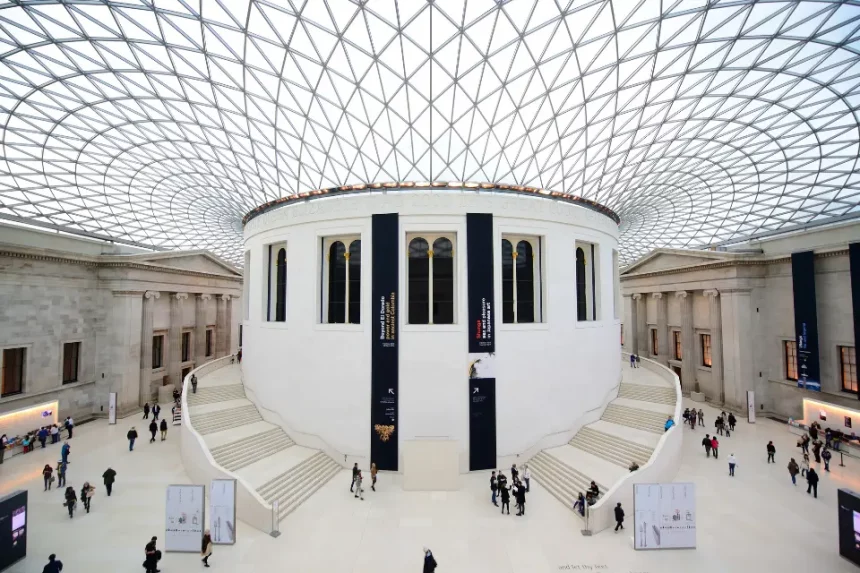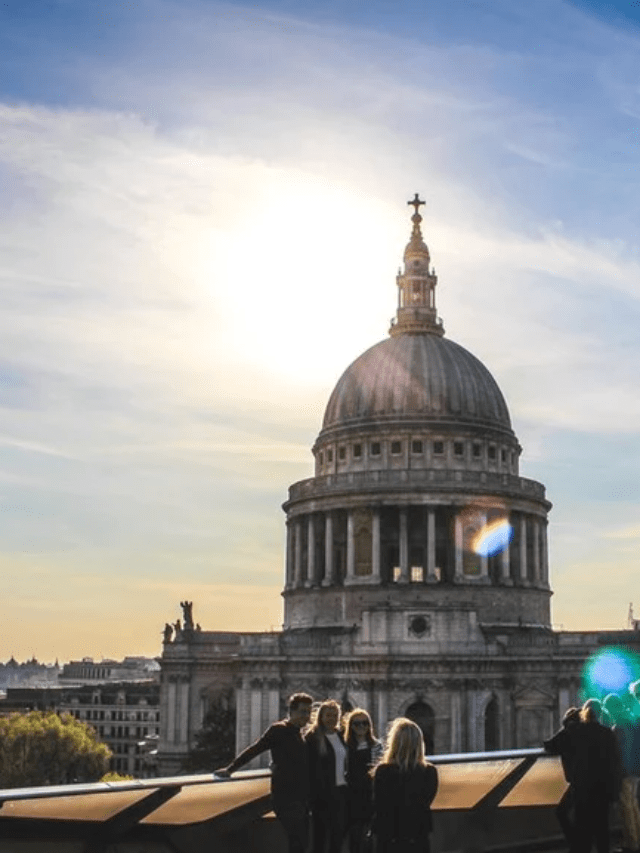From the Egyptian mummies of the British Museum in London, to the vibrant art collections of the Louvre in Paris, to the vast artifacts of the Smithsonian in Washington D.C., the world’s greatest museums are a global treasure trove of art, history, and culture. These museums are gateways to the past, offering an unparalleled opportunity to explore the world’s most extraordinary treasures. They are also a source of inspiration and learning, providing insight into the lives and works of some of the most important figures in history.
From the most ancient of civilizations to the most cutting-edge contemporary art, the best museums around the world are a must-see for any traveler looking to experience the world’s rich cultural heritage. This guide will provide an overview of some of the best museums in the world, offering an in-depth look at the unique offerings and experiences each has to offer.
1. British Museum, London
The British Museum is the world’s largest museum and one of its most important cultural institutions. Located in the Bloomsbury neighborhood of London, the British Museum’s vast collections include around 8 million items spanning the entire globe, including a vast array of archaeological artifacts, rare works of art, and historic artifacts.
The British Museum boasts an impressive collection of antiquities and art that spans the globe, from an Egyptian mummified priestess to rare Chinese ceramics, ancient Mesopotamian cuneiform tablets, and a collection of manuscripts that includes original works by Leonardo da Vinci, Charles Darwin, and Karl Marx. The British Museum also contains a wide array of historic artifacts, including a large collection of rare coins and a large collection of precious metals and stones.
Perhaps the most famous artifact in the British Museum is the Rosetta Stone, a 196-pound slab of black granodiorite inscribed with a decree issued by Egyptian pharaoh Ptolemy V in 196 BC. The Rosetta Stone is a key piece of evidence in the effort to understand the lost language of ancient Egyptian hieroglyphics. The British Museum is open daily, and admission is free.
2. Louvre, Paris
The Louvre is the most visited museum on Earth, with more than 9 million visitors a year, making it a must-see location for art lovers and history buffs visiting Paris. This stunning, historic palace houses an impressive collection of art, including works by Leonardo da Vinci, Rembrandt, Van Gogh, and Botticelli. The most famous piece in the Louvre is likely the world-famous “Mona Lisa”, a painting by Leonardo da Vinci considered by many to be the most famous artwork in the world.
The museum also houses a vast collection of Islamic art, including a rare example of a caliph’s curved sword, a giant golden shield, and a jewel-encrusted Koran. The Louvre is divided into a number of different wings, including the Antiquities Wing, the Islamic Art Wing, the Medieval Wing, and, of course, the Impressionist Wing, which houses
“The Starry Night” by Van Gogh, “The Card Players” by Vermeer, and “Liberty Leading the People” by Delacroix. The Louvre is open daily, though hours may vary depending on the month. Admission costs €13, or €9 for those under 26 or over 60.
3. Smithsonian, Washington D.C.
The Smithsonian, the largest museum complex in the world, is a veritable treasure trove of culture, art, and history. The Smithsonian consists of 19 museums and galleries, including the Air and Space Museum, the National Museum of Natural History, and the National Portrait Gallery. These 19 museums, combined with the National Zoo, comprise the Smithson-ian Institution, the world’s largest research and cultural organization.
The Smithsonian boasts an impressive collection of more than 137 million items, including the ruby slippers from “The Wizard of Oz”, Charles Darwin’s finch collection, the Star-Spangled Banner, and the world’s largest gem collection. The Smithsonian’s vast array of museums offers something for everyone, making it a must-see for any art or history lover.
The Smithsonian’s museums are open daily, with some closing on Mondays, except for the National Museum of Natural History, which is open 365 days a year. Admission is free, but timed-entry passes are required at many of the museums.
4. Acropolis Museum, Athens
The Acropolis Museum, located on top of the historic Acropolis in Athens, is the must-see museum for anyone interested in ancient Greek civilization. The Acropolis Museum houses a massive collection of artifacts and art from the Acropolis, offering a unique insight into Greek history and culture.
The highlights of the museum include a wide array of archaeological artifacts, including marble statues and jewelry, as well as architectural elements from the ancient Athenian temples. The museum also houses the reproductions of the pediments from the Parthenon, the temple that once stood on top of the Acropolis, as well as a full-scale model of the Athenian Acropolis.
The Acropolis Museum is a must-see for anyone interested in ancient Greek history. The museum is open daily, and admission costs €15 for adults and €7 for children under 12. The museum is closed on Mondays.
5. Museum of Art History, Vienna
The Museum of Art History, or the Kunsthistorisches Museum, is the world’s oldest art museum. The Kunsthistorisches Museum was first opened in 1891, and since then it has been collecting and exhibiting art from all over the world. The museum’s collection includes works from all major artistic periods, including a large collection of Medieval art and many important Renaissance works.
The museum’s most famous piece is likely “Adoration of the Virgin”, an early 15th-century oil painting by Hans Baldung, which the museum acquired in 1894. The Kunsthistorisches Museum is considered to be one of the best museums in Europe, and it is definitely a must-see for any art lover. The museum is open daily, but closed on Tuesdays. Admission costs €12 for adults and €6 for children under 18.
6. Prado Museum, Madrid
The Prado Museum, located in Madrid, is considered to be one of the world’s most important museums, housing a vast collection of art from all over the world. The Prado Museum’s collection includes a wide array of paintings, drawings, and sculptures, including classic works by Velázquez, Goya, and El Greco, as well as European pieces by Vermeer, Rembrandt, and Caravaggio, and many important works by artists from the Islamic world.
There are over 8,000 works in the museum’s permanent collection, making it one of the most extensive art museums in the world. The Prado Museum is a must-see for any art lover and definitely ranks among the best museums in Europe. The museum is open daily, but closed on Mondays. Admission costs €10 for adults and free for children under 12.
7. Rijksmuseum, Amsterdam
The Rijksmuseum, located in Amsterdam, is the Netherlands’ most famous museum, housing a vast collection of art from all over the world, including the world’s largest collection of paintings by the Dutch Golden Age painter Rembrandt van Rijn. The Rijksmuseum houses a wide array of paintings, sculptures, and artifacts from all over the world, including a collection of paintings by Dutch masters like Rembrandt, Vermeer, and Hals, as well as a large collection of Chinese ceramics, Islamic art, and medieval weapons and armor.
This massive museum boasts a collection of over 1,300 paintings, making it one of the most extensive art museums in the world. The Rijksmuseum is a must-see for any art lover, and with its location in the cultural center of Amsterdam, it is an ideal starting point for a trip through the Dutch Golden Age. The Rijksmuseum is open daily, though hours may vary depending on the month. Admission costs €19 for adults, €16 for students, and €11 for children under 18.
8. Vatican Museums, Vatican City
The Vatican Museums are the largest museums in the world, containing over 1,000 rooms and housing

















